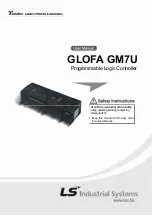AN11524
All information provided in this document is subject to legal disclaimers.
© NXP Semiconductors N.V. 2015. All rights reserved.
Application note
Rev. 1 — 17 February 2015
37 of 54
NXP Semiconductors
AN11524
NXQ1TXA6 Evaluation Board
In the screenshot of NXP NXQ1TXA6 Evaluation Board schematics (see
), the
current sense resistor R204 and input current is flowing from right to left.
Notice in
how the R207 and R208 resistors are connected to the pad of R204 to
eliminate measurement error. Copper conduction losses and copper resistance
temperature dependency are the cause of these errors. It is referred to as the “Four-wire”
or “Kelvin-connection” technique.
Proper and accurate current sensing technique is critical to the correct performance of the
Foreign Object Detection (FOD). The sense resistor R204 should have an accuracy of
1 % or better tolerance and have a temperature stability of at least 200 PPM.
8.6 EMC common mode filter
The common mode filter L601 in
functions to prevent high frequency
disturbance signals from traveling back to the DC input power connector J601. No ground
planes or other traces underneath the input power, otherwise it defeats the purpose of
having a common mode filter in the first place.
As seen in
, sufficient gap is created between the input power and the closest
copper area to prevent coupling of high frequency noise. It also shows that no copper fill
or traces in the inner layers underneath component L601 should be used.
Fig 26. Current sensing
Fig 27. PCB layout of current sense resistor in NXQ1TXA6 evaluation board
3
4
1
6
OUT
ISOUT
[1]
TP203
U202*
*only U202 or U203 is mounted.
Not both
C202
R204
RS+
RS-
VDD
SHDN
2
GND
5
C212
R202
C215
aaa-015911
R207
R210
n.c.
Kelvin contact
+3V3
R208
aaa-015912


















